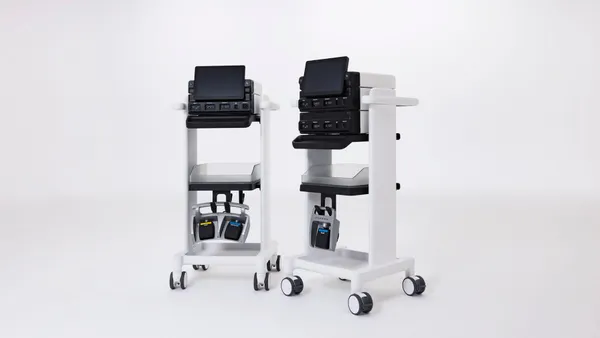Lobbying groups representing the medtech industry are pushing back on proposed limits to ethylene oxide emissions in comments submitted to the Environmental Protection Agency, claiming the changes would pressure the capacity for medical device sterilization and increase costs for commercial sterilizers.
Ethylene oxide (EtO) is a clear gas used to sterilize medical devices, especially those that are sensitive to heat and moisture. However, the properties that make it good at decontaminating devices also make it carcinogenic. According to the EPA’s most recent risk assessment, long-term inhalation exposure can increase a person’s lifetime cancer risk. Workers who handle EtO over the course of 35 years, or people who live in communities near commercial sterilizers over the course of 70 years, face an increased risk.
The EPA said 1 in 17 workers applying EtO to medical devices in commercial sterilization facilities and 1 in 25 workers applying EtO in healthcare facilities could develop cancer from this work if no voluntary risk reduction measures are in place. For people who live or work near sterilization facilities, the agency estimates 100 in 1 million people could get cancer from that exposure.
Medical device trade group AdvaMed estimates that EtO is used to sterilize more than half of all medical devices.
In April, the EPA issued a pair of proposed rules intended to limit EtO emissions from sterilization facilities by 80%. They include new limits to the concentration of the gas used to sterilize devices, as well as worker protections, such as emissions capture technology and requirements for staff to wear protective equipment.
AdvaMed, in an emailed copy of its comments to the EPA, estimated the proposals could reduce total capacity for sterilization facilities by 30% to 50% per site. The lobbying group also claimed “millions of products would require revalidation,” including regulatory submissions in the U.S. and other countries. It also raised concerns with the EPA’s claimed EtO reductions, saying the agency doesn’t consider background levels of EtO in its estimates.
The Medical Device Manufacturers Association, another group representing medical device companies, raised similar concerns, adding that half of smaller commercial sterilization firms could go out of business because of the increased costs of compliance.
“We urge EPA to withdraw the proposal, analyze the potential risks to sterilization capacity from both the NESHAP and the proposed ethylene oxide (EtO) pesticide registration, reach agreement with the U.S. Food and Drug Administration (FDA) on a supply risk assessment and management approach, and repropose standards that mitigate both the public health risk from air emissions and from delayed and reduced access to medical devices,” MDMA wrote in its submitted comments.
Despite the vocal pushback from device companies, the EPA’s proposed rule also found supporters among those who submitted comments.
“Many of our members practice in medical centers across the US and see workers and community members exposed to EtO. We are concerned about the long-term cancer risks of EtO exposure among those who work, live, go to school, or attend daycare in communities surrounding commercial sterilization facilities,” the American College of Occupational and Environmental Medicine wrote in submitted comments.
Among the more than 30,000 comments received by the agency, environmental justice groups such as National Tribal Air Association and individuals living near sterilization facilities also supported stronger emissions controls.
The EPA’s comment period closed on June 27. After the agency enacts a final rule, device companies would have 18 months to meet the new requirements.














